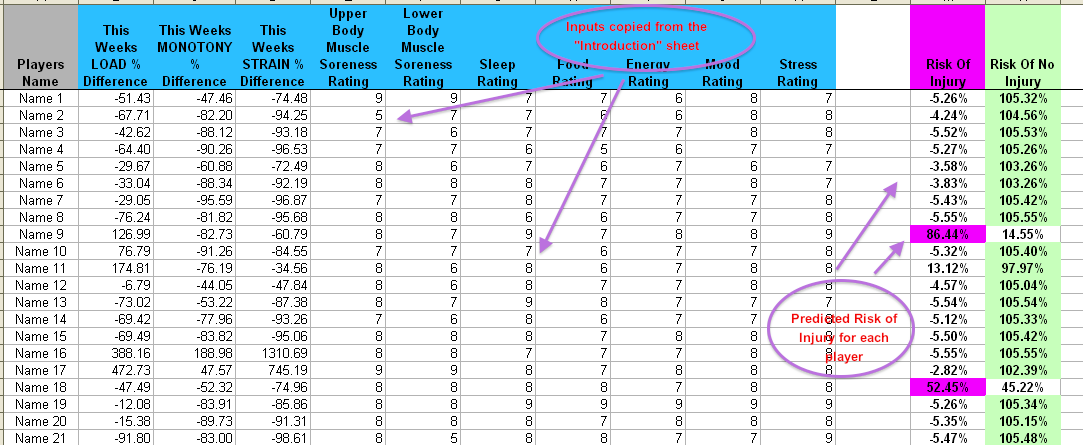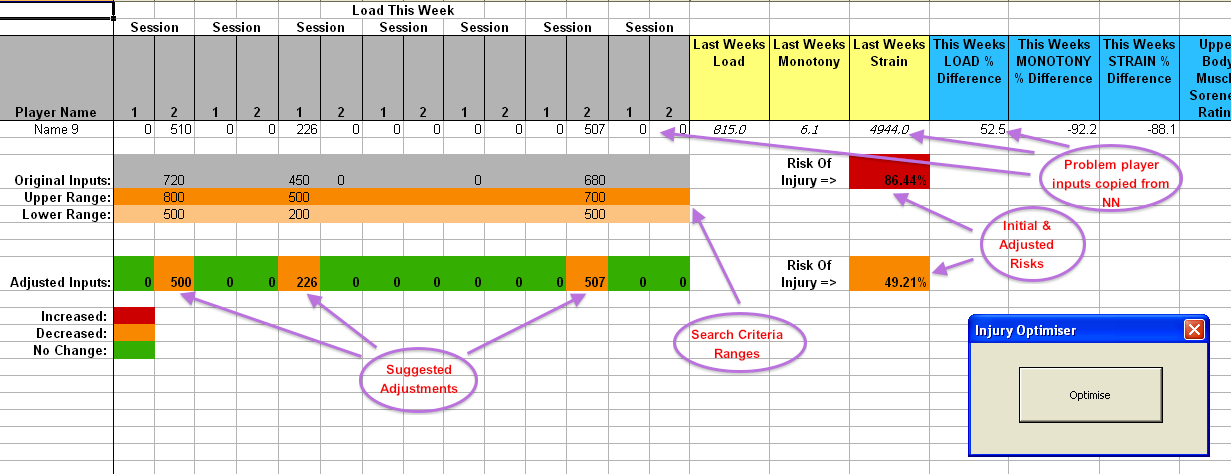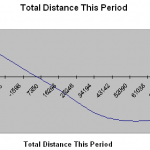As a rule our predictive models are custom built to match the specific requirements of a club and it’s staff. Unfortunately not every club has the resources – financial, staff or data – that will enable such an endeavor to be undertaken.
To help clubs take advantage of this technology, we have created a “boxed” version of our technology, allowing Coaching, Medical, and Strength & Conditioning staff at Rugby clubs who have always wanted a way to maximise a teams preparation, while at the same time reducing the risk of Soft-Tissue injuries during the coming week.
This product is also applicable to individual Rugby players, who as professional athletes, may wish to monitor the risk of soft-tissue injury they may be exposing themselves to, either as part of the squads training, or as a result of their own individualised training program.
Although this product is based on our very effective artificial intelligence software, it has been greatly simplified compared to our bespoke systems, and makes no assumptions about the availability of historical data, technical or support staff. This is a low cost of entry solution, for those clubs or individuals wishing to explore this technology, but who may not have the willingness or resources to consider a more customised approach.
In fact there are two parts (or perhaps I should say packages) to this story – a Predictor and an Optimiser.
The predictor software can analyse the risk of soft-tissue injury up to a week in advance, for one or more athletes.
The system, which utilises an Excel spreadsheet as a front-end for input and output purposes, requires a minimal amount of information such as your planned training session durations and associated RPEs (Relative Perceived Exertion – 0 to 10), last weeks Load, Monotony and Strain results, which were calculated by the spreadsheet,
last weeks Load, Monotony and Strain results, which were calculated by the spreadsheet,
 and finally several Muscle Soreness and Well-being ratings taken at the start of the week
and finally several Muscle Soreness and Well-being ratings taken at the start of the week
Once this weeks planned session times and anticipated RPE’s, last weeks total Load / Monotony / Strain, and current Muscle Soreness and Well-being ratings have been entered, the Injury Predictor neural network will, based on it’s training, produce a risk assessment for each individual for the coming week.

The second part of this story is the Optimiser.
The Rugby Injury Optimiser (or Optimiser) product, uses a unique search algorithm to find an “optimal” training scenario so as to minimise the risk of injury to an athlete. This “optimal” scenario is subject to constraints which can be stipulated by the user.
The Optimiser compliments the Rugby Injury Predictor (or Predictor) product, by working in partnership with it to evaluate different possible training scenarios.
Once the Predictor highlights an unacceptable risk of injury, it is possible to explore how that risk might be reduced to an acceptable level, by manually re-running the Predictor repeatedly, with the user changing inputs manually and re-examining the results. It may be possible to eventually reach an acceptable level of injury risk in this manner. The only disadvantage to this approach is the time it might take to do this (with hundreds or more possible scenarios), and the uncertainty of not knowing whether the risk achieved was at its lowest level. This is why we developed the Optimiser.
If the Predictor indicates that a player is at risk, those inputs relating to that player can be copied from the Injury Predictor into the Optimiser.

The user simply enters the upper and lower ranges for those factors which could be modified – in this case the expected session loads. The Optimiser then, in conjunction with the Predictor neural network, intelligently assesses hundreds if not thousands of possible scenarios, till the lowest possible risk of injury is determined, within the stated upper and lower load ranges.
The Optimiser displays the “adjusted loads” required to achieve this outcome.
Both the Rugby Injury Predictor and Optimiser require Microsoft Excel and Microsoft Windows, and in the case of the Optimiser, also requires the prior installation of the Rugby Injury Predictor.
















